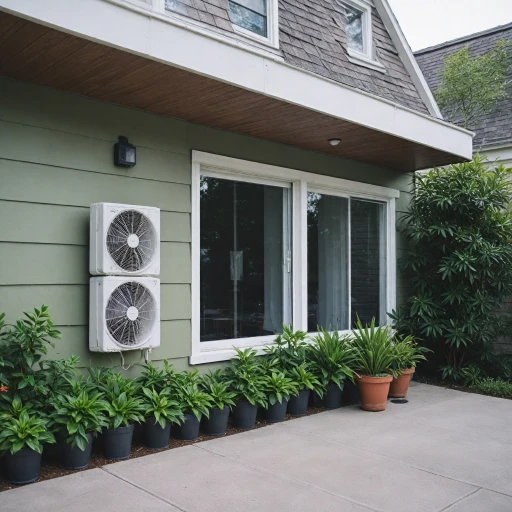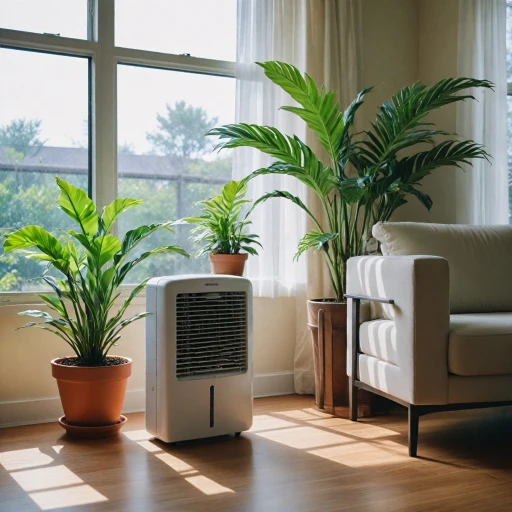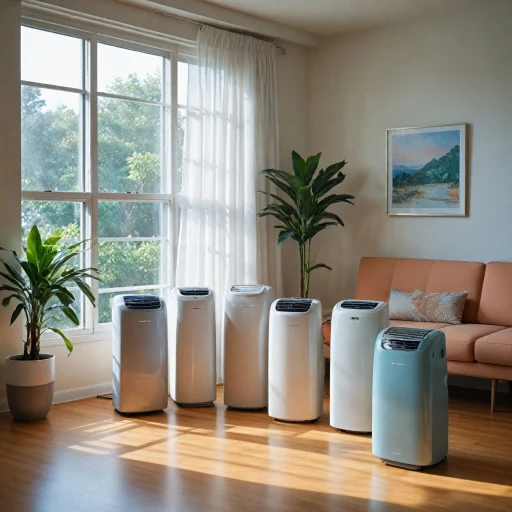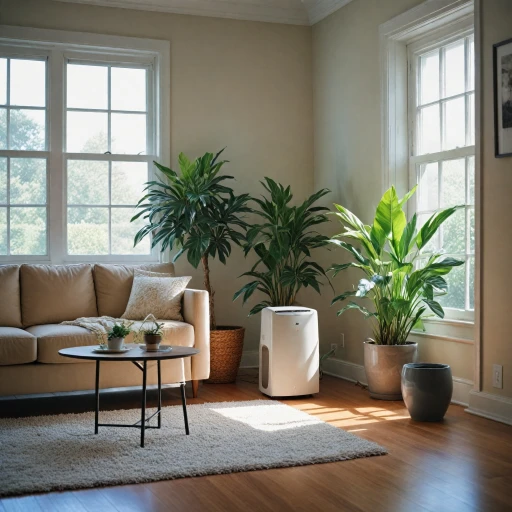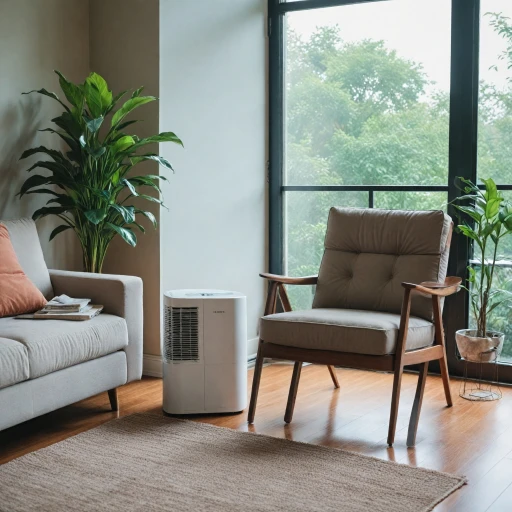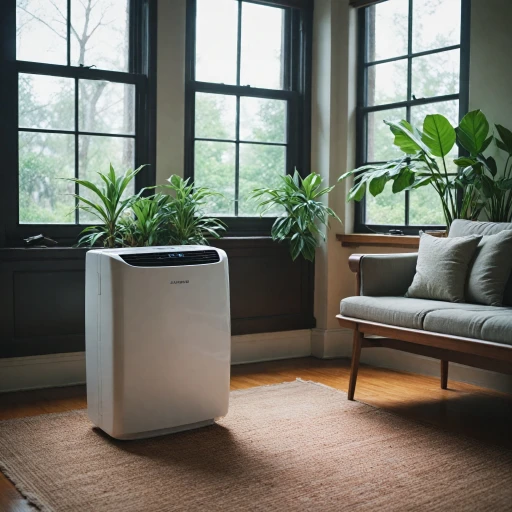
What is a Ductless AC System?
Unveiling the Mechanics of a Ductless Mini Split System
A ductless air conditioner, often referred to as a mini split system, offers a sleek and efficient way to provide heating and cooling without the need for traditional ductwork. This type of split system is composed primarily of two core components – an outdoor unit and one or more indoor units. The connection between these key parts is facilitated by a refrigerant line which plays a central role in energy-efficient climate control.
The outdoor unit of a ductless mini split is typically compact yet powerful, housing the compressor and condenser. In contrast, the indoor unit is designed to be wall mounted, easily blending with interior aesthetics while ensuring optimal air distribution. These systems are lauded for their ability to create different climate zones within a building, efficiently maintaining individual room temperatures according to personal preference.
What truly distinguishes a ductless mini split air conditioner is its potential to significantly cut down energy consumption. These systems often boast high Seasonal Energy Efficiency Ratio (SEER) ratings, a crucial metric reflecting energy performance. The absence of ducts not only simplifies installation, but drastically reduces energy loss, a common drawback of traditional systems. Featuring advanced inverter technology, these ductless air conditioners offer precision performance with minimal waste.
Whether referred to as multi-zone units, mini splits, or split air systems, the growing popularity of ductless options underscores a shift towards minimizing environmental impact while maximizing comfort. Explore the benefits and challenges to gain insight into whether a ductless system aligns with your cooling or heating goals.
Advantages of Ductless AC Systems
Energy Efficiency and Cost Savings
Ductless air conditioning systems, often referred to as mini splits, are renowned for their energy efficiency. These systems typically boast high SEER (Seasonal Energy Efficiency Ratio) ratings, which translate to lower energy consumption and reduced utility bills. The ability to control the temperature in individual zones means you can cool only the rooms you use, further enhancing energy savings. This targeted approach not only conserves energy but also reduces the overall cost of operation.
Flexible Installation Options
One of the standout features of ductless mini split systems is their flexible installation. Unlike traditional systems that require extensive ductwork, these units consist of an indoor unit and an outdoor unit connected by a small conduit. This design allows for easy installation in a variety of settings, from older homes without existing ducts to new constructions. The wall-mounted indoor units are discreet and can be placed in strategic locations to maximize efficiency and comfort.
Improved Indoor Air Quality
Ductless systems contribute to better indoor air quality by eliminating the need for ducts, which can harbor dust, allergens, and other pollutants. Many ductless units come equipped with advanced filtration systems that help purify the air, making them an excellent choice for those with allergies or respiratory concerns. This feature ensures that the air circulating in your home is cleaner and healthier.
Versatile Heating and Cooling
In addition to cooling, many ductless systems function as heat pumps, providing efficient heating during colder months. This dual functionality makes them a versatile option for year-round comfort. With a ductless mini split, you can enjoy consistent temperatures regardless of the season, without the need for separate heating and cooling systems.
Quiet Operation
Noise can be a significant concern with traditional air conditioners, but ductless systems are designed for quiet operation. The indoor units operate at a low decibel level, ensuring a peaceful environment in your home. This makes them ideal for bedrooms, home offices, and other areas where noise reduction is a priority.
Comparing Ductless AC to Traditional Systems
Deciphering Different Features: Ductless Mini Split vs. Traditional HVAC Systems
When choosing an AC system, comparing a ductless mini split to traditional HVAC systems can help you determine which one best suits your requirements. A common question among consumers is: why choose a mini split air conditioner over a traditional system? First, let's address energy efficiency. Mini splits, including the ductless air conditioner, typically come with high Seasonal Energy Efficiency Ratio (SEER) ratings. This can translate into significant energy savings, especially when compared to some older traditional air conditioners. The SEER ductless systems offer ensures that you are not wasting energy, which is ideal for environmentally-conscious homeowners. Another notable feature is the ability to create a multi zone environment within your home. Mini split systems allow you to control the temperature in different zones independently, thanks to multiple indoor air handlers connected to one outdoor unit. This zoning capability is advantageous for efficiently heating or cooling only the spaces in use, offering flexibility and personalized comfort. Installation considerations also differ. Ductless mini splits have a simpler installation process since they do not require ductwork. This is especially beneficial for older homes or areas where adding ductwork might not be feasible. In contrast, traditional ducted systems can be more invasive and time-consuming to install, necessitating the rerouting of ducts and often involving higher labor costs. The initial cost of a mini split air conditioner might be higher, but when you factor in no ductwork and the associated labor costs with traditional split systems, they can become a more financially viable option. Furthermore, units like Cooper Hunter with energy star certification can enhance savings over time due to reduced energy consumption. Lastly, consider the aesthetic and spatial impact; ductless mini split systems are often wall mounted and can reduce the clutter in your living space compared to bulkier traditional units. In conclusion, the choice between a ductless mini split and a traditional HVAC system depends on your specific needs, priorities, and the layout of your home. Each offers unique benefits and potential limitations that require careful consideration.Installation Considerations for Ductless AC
Key Factors to Consider During Installation
Installing a ductless mini split system involves several important considerations to ensure optimal performance and efficiency. Unlike traditional air conditioners, ductless systems offer flexibility and ease of installation, but there are still key factors to keep in mind.
Placement of Indoor and Outdoor Units
The placement of both indoor and outdoor units is crucial for the effectiveness of your ductless air conditioner. Indoor units should be wall mounted at a height that allows for efficient air distribution across the room. The outdoor unit, on the other hand, should be placed in a location that allows for proper ventilation and easy access for maintenance. Avoid placing the outdoor unit in areas prone to debris accumulation or excessive heat exposure.
Multi-Zone Configuration
If you're considering a multi-zone ductless system, plan the layout carefully. Each zone will require its own indoor unit, and the placement should be strategic to ensure each area receives adequate heating and cooling. This setup allows for personalized comfort and energy efficiency, as you can control the temperature in each zone independently.
BTU and SEER Ratings
When selecting a ductless mini split, pay attention to the BTU and SEER ratings. The BTU rating indicates the unit's cooling capacity, while the SEER rating measures energy efficiency. Choosing the right BTU and SEER ratings for your space will ensure your system operates efficiently, saving you money on energy bills over time.
Installation Kit and Professional Assistance
While some homeowners may opt for DIY installation using an installation kit, it's often advisable to seek professional assistance. A certified technician can ensure that the system is installed correctly, preventing potential issues down the line. Proper installation is key to maximizing the lifespan and efficiency of your ductless air conditioner.
Considering these factors during installation will help you make the most of your ductless mini split system, providing effective heating and cooling for your home.
Maintenance and Care for Ductless AC Systems
Maintaining Your Ductless AC System for Longevity
Proper maintenance and care of your ductless AC system can significantly enhance its efficiency and lifespan. Whether you have a mini split or multi-zone unit, regular attention is critical to ensure its optimal performance. Here are some key maintenance practices:- Regular Cleaning: Keeping the indoor unit clean is essential. Dust and debris can clog the filters, affecting airflow and efficiency. Make sure to clean or replace filters every 1-2 months, depending on usage.
- Monitoring Outdoor Units: The outdoor unit, or outdoor splits, should also be kept free from obstructions. Clean the exterior and remove any leaves or debris that might disrupt its function.
- Check for Leaks: Regularly inspect your ductless system for any refrigerant leaks. This task is best performed by a professional, as it involves handling the refrigerant safely.
- Professional Inspection: Schedule a professional check-up at least once a year. A trained technician can assess the system’s SEER (Seasonal Energy Efficiency Ratio) rating, BTU output, and other important factors to ensure your system is running efficiently.
- Test the Heat Pump: If your ductless air conditioning system includes a heat pump, it's important to test its heating function before the onset of colder months to ensure it's ready for use when needed.
Cost Analysis: Is Ductless AC Right for You?
Financial Implications of Adopting a Ductless Mini Split System
When contemplating a ductless mini split system, weighing the cost factors is pivotal. These systems can be more costly upfront compared to traditional air conditioners or heating solutions due to the advanced technology and installation requirements. However, the potential for savings over time can justify the initial expenditure.- Initial Installation Costs: The setup of ductless systems tends to be more complex, requiring professional installation. The cost will vary depending on the number of indoor units (zones) and the complexity of the installation. Factors like multi-zone configurations can increase the price as each zone needs an indoor unit and a connection to the outdoor unit.
- Energy Efficiency and Savings: Systems with a high Seasonal Energy Efficiency Ratio (SEER) can significantly cut energy bills. A higher SEER ductless system can be more cost-effective in the long run, reducing monthly energy expenses due to its efficient operation.
- Maintenance Costs: Although ductless air conditioners are generally low-maintenance, routine servicing is recommended to keep them running efficiently. Regular cleaning of filters and servicing of the outdoor and indoor units helps in maintaining performance and avoiding any costly repairs.
- Long-Term Investment: Investing in a ductless mini split system can increase property value. Prospective buyers often view modern, energy-efficient HVAC solutions as attractive features, potentially enhancing resale value.



